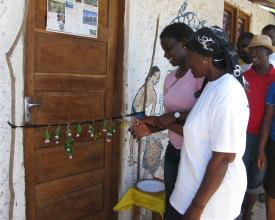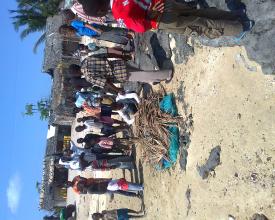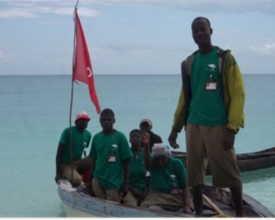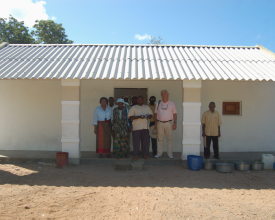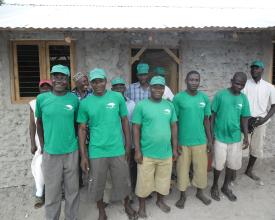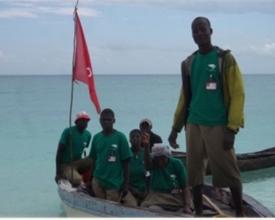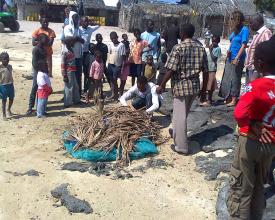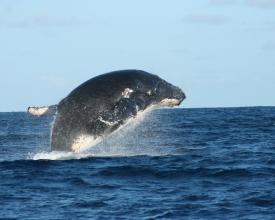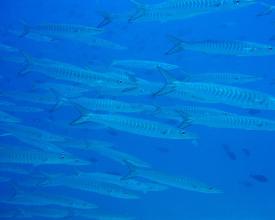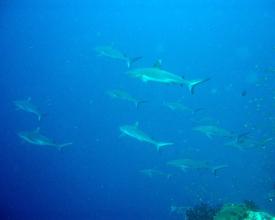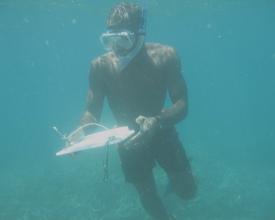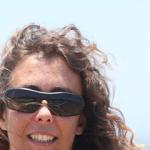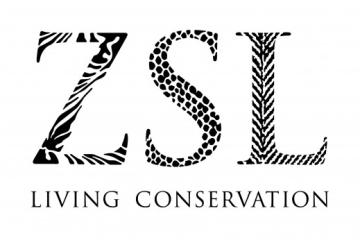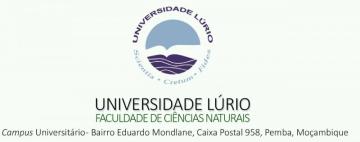
Garantizar la protección marina mediante una zona marina gestionada localmente en la isla de Vamizi (Mozambique)
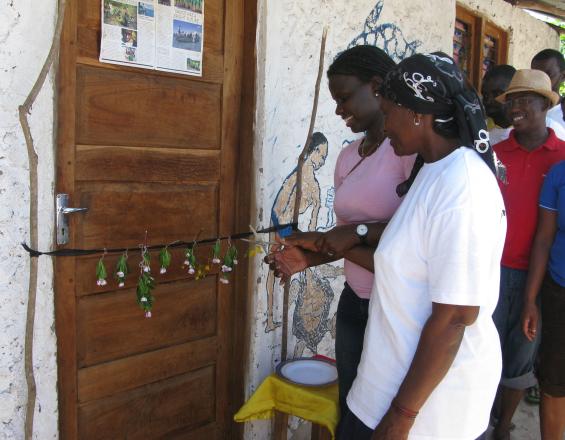
Una asociación única entre un albergue, una universidad y las comunidades locales (especialmente el CCP, Consejo Comunitario de Pesca), dio como resultado más de 12 años de protección de los recursos naturales a través del Área Marina Localmente Gestionada (LMMA) de la isla de Vamizi, o como se la conoce localmente: un santuario.
La solución se centró en la mitigación de los dos mayores problemas de la comunidad local: la salud y la educación. Apoyar la ayuda médica y capacitar a los profesores de una escuela local fueron la "moneda de cambio" para poner en marcha una LMMA en la isla. Tras la desconfianza inicial, se persuadió a los pescadores para que cooperaran: 6 años más tarde, la pesca en los alrededores de Vamizi mejoró y llegó a ser significativamente mejor que la de las aguas circundantes.
La isla de Vamizi es ahora famosa por su LMMA, un lugar donde están prohibidas la captura de tortugas, la pesca con mosquitera y el submarinismo ilegal. La LMMA ha aumentado las tasas de captura de los pescadores y puede contar con el Consejo de Pesca para controlar la pesca ilegal a su alrededor.
Contexto
Défis à relever
- Pobreza extrema e inseguridad alimentaria
- Ubicación muy remota, que conduce a una mayor segregación cultural, espacial y lingüística del resto de Mozambique.
- Estos factores contribuyen a la falta de medios de subsistencia e intervenciones de conservación.
Ubicación
Procesar
Resumen del proceso
La Salud&educación (BB1) fue la base de todo el apoyo inicial de la comunidad a la ZMVM. Después de 6 años, la comunidad vio los resultados (BB4) alrededor de la ZMVM y fuera de Vamizi y finalmente se dieron cuenta de lo importante que es la ZMVM para el futuro de sus medios de subsistencia.
Los demás elementos constitutivos trabajan juntos para crear las condiciones financieras (BB2) y técnicas (BB3) que, cuando se gestionan adecuadamente, generan un fuerte apoyo comunitario. La mayoría de las otras ZMVM de los alrededores de Vamizi fracasaron porque se acabó el apoyo externo a la ZMVM y las comunidades no tenían los medios (barco y gasolina) para patrullar la zona ni el apoyo legal para proceder con multas o formas de seguir vigilando la ZMVM. El hecho de que Vamizi cuente con un albergue que le proporciona apoyo para la gasolina y el motor de la lancha, hizo posible que el PCC de Vamizi continúe con el cumplimiento de la LMMA (BB2). Además, las tarifas que se cobran a los turistas permiten al PCC realizar algunos patrullajes más. El apoyo técnico de la Universidad (BB3) proporciona educación ambiental continua, apoyo legal y monitoreo biológico permitiendo a los nuevos miembros del PCC y a la comunidad (la mayoría de la población de Vamizi son pescadores migrantes) recordar la importancia del PCC.
Bloques de construcción
Desarrollar la educación básica y las instalaciones sanitarias
En 2006, la isla de Vamizi estaba a más de 2 días del hospital provincial, a un viaje en barco de 6-12h de cualquiera de los hospitales de distrito y a 3-6h del centro de salud más cercano. Obviamente, la atención sanitaria era un problema importante para la población. El centro de salud con apoyo médico y la patrullera CCP utilizada como ambulancia venían a solucionar parte de las necesidades sanitarias básicas. No había escuela en Vamizi cuando la empresa turística empezó a operar en 2003. Primero apoyaron la petición de un profesor del departamento de educación para Vamizi. A continuación, la empresa recaudó los fondos para la construcción de una escuela en 2008. Esto supuso una gran mejora para la vida de los niños.
Estos dos acontecimientos, encabezados por la empresa turística y apoyados posteriormente por la UniLúrio, fueron la base del apoyo de las comunidades a la LMMA.
Factores facilitadores
Donantes interesados en colaborar con las comunidades; dispuestos a ceder un centro de salud y una escuela a cambio de crear una zona de protección dotada de apoyo científico.
Lección aprendida
Todos los esfuerzos en materia de sanidad y educación deben coordinarse con el gobierno para integrar los esfuerzos privados en el programa más amplio del gobierno, para evitar que el pueblo reciba menos o más de lo que el gobierno planea (es notorio que una mejor sanidad y educación puede atraer gente a la zona, y un exceso de población puede poner en peligro el esfuerzo de conservación y la ZMVM).
Financiación sostenible de las operaciones de las ZMVM mediante una tasa turística
Sin un apoyo sostenido, la aplicación de la ley y la prevención de las transgresiones a la ZMVM habrían sido imposibles. Cuanto más famosa era la LMMA de Vamizi, más aumentaba la presión de la gente que accedía a la zona. El apoyo continuo en gasolina para las patrullas y el mantenimiento de la embarcación CCP fue crucial para el éxito de la ZMVM. La tasa recaudada de los usuarios turísticos de la ZMVM es una recompensa extra para el mantenimiento de la ZMVM y para las personas que realizan las patrullas pertenecientes a los CCP.
Factores facilitadores
Destino turístico de primer orden que opera cerca del pueblo, responsable y solidario con la conservación y las acciones comunitarias
Lección aprendida
Comunicación, comunicación y comunicación. Las buenas acciones pueden ser mal interpretadas. La comunicación en todas las fases del proyecto y con todos los intervinientes es la clave de una buena asociación.
Organización local que presta apoyo técnico sostenible
La participación activa de UniLúrio en todas las fases del proceso, especialmente en la educación y el seguimiento, fue esencial para mantener implicada a la comunidad. La población local no sabe leer ni escribir, y pocos saben hablar portugués (lengua nacional). Obviamente, Unilúrio es quien lleva los registros y publica la información más importante relacionada con la LMMA.
Factores facilitadores
Universidad local (UniLúrio) implicada desde el principio en el seguimiento de la LMMA, la conservación de las tortugas, el seguimiento de la pesca y la educación sobre los tiburones.
Lección aprendida
Las organizaciones internacionales suelen ir y venir. A menos que el apoyo se preste a través de una organización local (UniLúrio), no hay estabilidad en el apoyo técnico.
Recursos
Seguimiento ecológico
El seguimiento lo pusieron en marcha primero ZSL, WWF y finalmente la UICN. La UniLúrio apoyó con diferentes funciones hasta convertirse en la institución líder en el seguimiento y la divulgación de los resultados. "Contra los hechos no hay argumentos" dice un refrán portugués, pero mejor que los hechos es que la gente pueda ver en la pesca y en el buceo el resultado de sus esfuerzos. Sin duda, ver que salen más peces y más grandes de sus redes es el mejor argumento para apoyar la LMMA.
Factores facilitadores
Progresivamente, la comunidad vio los resultados y fue apoyando más la LMMA. El gobierno local se enorgulleció de la LMMA, que ahora es un escaparate.
Lección aprendida
Los resultados deben discutirse con todos. Los fracasos deben abordarse y debatirse a fondo entre todos los socios.
Impactos
La primera reacción positiva de la comunidad fue sentirse orgullosa de su clínica y su escuela, por fin podían ir a una consulta sin salir de la isla y sus hijos podían estudiar sin salir de casa. Un proyecto de distribución de comidas en la escuela hizo que los niños siguieran asistiendo a clase. Las subvenciones para la educación de las niñas están apoyando a las mejores alumnas y cambiando la mentalidad sobre la educación de las niñas, modificando el sentimiento de la gente al respecto o, al menos, haciéndoles hablar de ello. Estos primeros pasos tuvieron un impacto sustancial en el pueblo e hicieron que la gente estuviera más dispuesta a aceptar el turismo y la LMMA.
Mientras tanto, el CCP desarrolló boyas artesanales, para demarcar la LMMA, hechas con materiales locales para evitar robos. Ahora los CCP del continente vienen a ver cómo se construyen y están reproduciendo el sistema. . Otros albergues están siguiendo los pasos de la experiencia de Vamizi, apoyando no sólo las patrullas de las LMMA, sino también proporcionando mejor educación y sanidad en lugares remotos.
Las investigaciones muestran que ha aumentado el número de especies y peces individuales que se encuentran allí, así como el tamaño y la cantidad de peces capturados localmente.
En conjunto, la ZMVM de Vamizi es un ejemplo destacado de cooperación fructífera entre el turismo, la universidad y las comunidades, pero también una ZMVM que está cambiando a mejor la vida de las comunidades circundantes.
Beneficiarios
Comunidades pesqueras costeras en torno a la isla de Vamizi
Objetivos de Desarrollo Sostenible
Historia
La isla de Vamizi está situada en la provincia de Cabo Delgado, distrito de Palma. Vamizi es el hogar de una comunidad residente desde la época árabe, con una población estimada de 533 personas en 1999 y 1300 en 2011.
La zona continental próxima a la isla es uno de los tramos de costa más remotos y pobres de Mozambique, ya que quedó aislada durante más de 30 años de guerra civil. También está alejada de los centros estratégicos de actividad económica, que se encuentran en el sur del país. Hace poco se descubrieron las terceras mayores reservas de gas natural del mundo, a 58 km de Vamizi, y su explotación está en marcha.
En 2006 se creó un santuario comunitario (LMMA) alrededor del lado oriental de la isla,
que se adentra 3 km en el mar, con una superficie de unas 10.000 ha. Esta LMMA fue creada por el CCP de Vamizi con el apoyo del lodge y está patrullada y gestionada por el CCP en nombre de la comunidad local. La LMMA se creó con el objetivo de diseñar una zona donde las distintas especies marinas tuvieran la oportunidad de completar plenamente sus ciclos vitales, garantizando la salud del propio ecosistema. Los arrecifes que rodean Vamizi figuran entre los más sanos y con mayor biodiversidad del Océano Índico Occidental.
Los estudios destacan la importancia de esta ZMVM, al demostrar cómo no sólo ha beneficiado a la zona que se encuentra en su interior, sino también a las adyacentes. Las investigaciones muestran que ha aumentado el número de especies y peces individuales que se encuentran allí, así como el tamaño y la cantidad de peces capturados localmente.
La construcción del albergue comenzó en 1998 y estableció actividades turísticas y de conservación en la isla. Ha habido una presencia permanente de investigación en la isla de Vamizi desde 2006, cuando se estableció por primera vez un proyecto de seguimiento e investigación de tortugas. A lo largo de los años, las actividades de conservación se han ampliado gracias a fructíferas asociaciones con destacados expertos marinos de la WCS, la ZSL, CORDIO, el WWF y la UICN, que aportan su experiencia y proporcionan acceso a una red internacional de expertos y socios en conservación.
El principal apoyo de Vamizi desde 2008 ha sido UniLurio, una nueva universidad estatal especializada en ciencia e ingeniería con sede en el norte de Mozambique. La Facultad de Ciencias Naturales presta apoyo a la conservación y a las comunidades proporcionando una continuidad de la que carecen los proyectos de las ONG.

